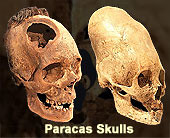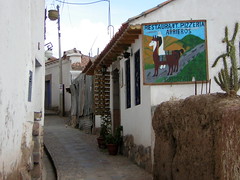Ancient Peru Pyramid Spotted by Satellite

Nazca pyramid discovered
Updated here.
A new remote sensing technology has peeled away layers of mud and rock near Peru’s Cahuachi desert to reveal an ancient adobe pyramid, Italian researchers announced on Friday at a satellite imagery conference in Rome.
Nicola Masini and Rosa Lasaponara of Italy’s National Research Council (CNR) discovered the pyramid by analysing images from the satellite Quickbird, which they used to penetrate the Peruvian soil.
The researchers investigated a test area along the river Nazca. Covered by plants and grass, it was about a mile away from Cahuachi’s archaeological site, which contains the remains of what is believed to be the world’s biggest mud city.
Via Quickbird, Masini and colleagues collected hi-resolution infra-red and multi spectral images. After the researchers optimized the images with special algorithms, the result was a detailed visualization of a pyramid extending over a 9,000-square-mile area.
The discovery doesn’t come as a surprise to archaeologists, since some 40 mounds at Cahuachi are believed to contain the remains of important structures.
“We know that many buildings are still buried under Cahuachi’s sands, but until now, it was almost impossible to exactly locate them and detect their shape from an aerial view,” Masini told Discovery News. “The biggest problem was the very low contrast between adobe, which is sun-dried earth, and the background subsoil.”
Cahuachi is the best-known site of the Nazca civilization, which flourished in Peru between the first century B.C. and the fifth century A.D. and slid into oblivion by the time the Inca Empire rose to dominate the Andes.
Read the rest of this entry at Discovery.com »









![Novalima in London [Featured]](http://farm3.static.flickr.com/2311/1508319950_4fede310ba_m.jpg)
